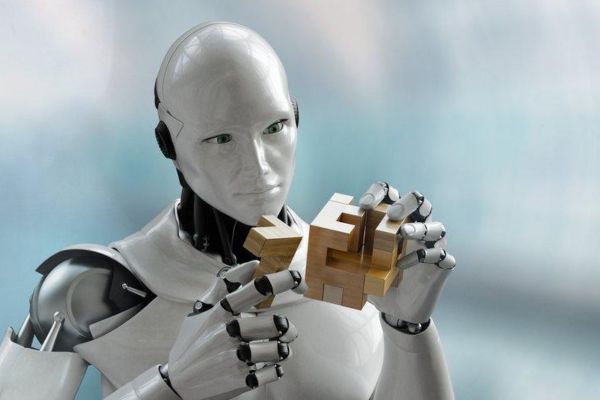The global humanoid robot market was valued at USD 1.58 billion in 2024 and is projected to reach approximately USD 6.72 billion by 2034, expanding at a compound annual growth rate (CAGR) of 15.57% from 2025 to 2034. In the U.S., the humanoid robot market was estimated at USD 0.56 billion in 2024.
The humanoid robots market is projected to experience substantial growth, driven by advancements in AI, machine learning, and robotics technologies. These robots, designed to mimic human appearance and behavior, are being increasingly adopted across various industries, including healthcare, retail, education, and entertainment. In healthcare, humanoid robots are enhancing patient care by assisting with surgeries, rehabilitation, and elderly care. In retail and tourism, they are deployed to help customers, assist with shopping, and even provide security functions. In education, these robots aid interactive teaching, especially for students with disabilities. Key drivers of market growth include the rise in automation, an aging population requiring assistance, and the growing use of AI, sensors, and computer vision to improve robot functionality.
Report Highlights
- North America led the market in 2024, capturing a 47.50% revenue share.
- Asia Pacific accounted for 27.80% of the market share in 2024 and is witnessing the fastest growth during the forecast period.
- The wheel drive segment had the highest revenue share of 66% in 2024.
- Hardware was the leading component in 2024, with a 68% revenue share.
- The personal assistance and caregiving segment dominated with a 31.68% revenue share in 2024.
Recent Investments in Humanoid Robot Market
Figure AI’s Significant Funding
- In February 2024, Figure AI, a robotics startup specializing in humanoid robots for factory and home use, secured $675 million in funding from investors including Nvidia, Jeff Bezos, OpenAI, and Microsoft. This investment aims to accelerate the development of versatile humanoid robots designed for tasks in warehouses and elder care.
Apptronik’s Expansion Plans
- In February 2025, Apptronik, an Austin-based robotics company, raised $350 million to scale production of its AI-powered humanoid robot, Apollo. Led by B Capital and Capital Factory, with participation from Alphabet’s Google, the funding is intended to deploy Apollo in warehouses and manufacturing plants for supply chain tasks, and to expand its applications in elder care and healthcare.
Meta Platforms’ Robotics Division
- Meta Platforms has announced plans to establish a new division within its Reality Labs to develop AI-powered humanoid robots for physical tasks. This move positions Meta alongside competitors like Nvidia-backed Figure AI and Tesla in the robotics arena. The initiative will be led by Marc Whitten, former CEO of Cruise, as VP of robotics, and John Koryl, former CEO of The RealReal, as VP of retail.
Nvidia’s Strategic Shift Towards Robotics
- Nvidia is focusing on robotics to drive future growth, planning to release its latest computer for robots, Jetson Thor, in early 2025. The company has invested in humanoid robotics company Figure AI and partners with firms like Google DeepMind. Nvidia’s move comes amid increasing competition from other chipmakers and cloud computing groups like Amazon and Microsoft.
Tesla’s Ambitions in Humanoid Robotics
- Tesla plans to scale up robot production significantly by 2027. Despite Tesla’s high valuation compared to traditional car manufacturers, its share value has increased by approximately 78% in the past year, outperforming the S&P 500 and Dow Jones Industrial Average.
What are the recent trends of humanoid robot market?
- Advancements in Sensor Technology: Recent improvements in sensor technology have expanded the functionality of humanoid robots. These robots can now detect motion, process images to recognize faces, assess temperature with thermal sensors, and interact through tactile sensors, enabling them to work efficiently and safely with people and objects. Such developments make humanoid robots more versatile and capable of performing both industrial and domestic tasks.
- Growth of Robotics in Education: Humanoid robots are gaining traction in educational settings, particularly for children with disabilities. Robots like NAO and Pepper help teach STEM subjects, language, and socialization through engaging and interactive methods, making learning more accessible and fun.
- Increased Investments in Robotics: Growing investments from both public and private sectors are driving advancements in humanoid robot design and functionality. These investments focus on enhancing AI, improving robot designs, and developing more flexible robots. As production costs decrease, humanoid robots are becoming more accessible to a broader market.
- Addressing Labor Shortages: Many industries, including healthcare, logistics, and retail, are facing labor shortages. Humanoid robots are stepping in to fill gaps, especially in physically demanding tasks. They offer round-the-clock operation, reducing labor costs while increasing service availability—vital in countries with an aging population and declining birth rates.
- Adoption in Entertainment: Humanoid robots are increasingly used in entertainment settings, such as theme parks and marketing campaigns. These robots engage crowds through dancing, talking, and interacting in an entertaining manner, enhancing the overall experience and contributing to market growth.
Humanoid Robot Market Regional Analysis
- North America: The North American humanoid robot market, valued at USD 0.75 billion in 2024, is expected to reach USD 3.19 billion by 2034. The region benefits from advanced technological ecosystems, including top robotics manufacturers and research institutions. Industries like healthcare, retail, and defense are rapidly adopting humanoid robots for applications such as customer service and security.
- Europe: The European humanoid robot market was valued at USD 0.29 billion in 2024 and is projected to grow to USD 1.25 billion by 2034. Countries like Germany, France, and the UK are at the forefront of robotics adoption, particularly in manufacturing and healthcare. The EU’s strong focus on AI ethics supports the integration of humanoid robots in society, particularly in eldercare and customer service.
- Asia-Pacific: The Asia-Pacific humanoid robot market, valued at USD 0.44 billion in 2024, is expected to surpass USD 1.87 billion by 2034. Countries like Japan, South Korea, and China are leading in robotics, especially in healthcare, hospitality, and education. Japan’s advanced robotic technologies and China’s AI investments are driving demand for humanoid robots.
- LAMEA: The LAMEA humanoid robot market, valued at USD 0.10 billion in 2024, is expected to reach USD 0.41 billion by 2034. The region is gradually adopting humanoid robots in sectors like hospitality, retail, and education, aiming to improve accessibility and service delivery.
Humanoid Robot Market Segmental Analysis
Motion Type Analysis
- Wheel Drive: Robots with wheel drive offer faster and more stable navigation than bipedal robots, making them ideal for industrial, customer care, and logistics applications. These robots can cover more ground without tipping over, carrying more load in the process.
- Biped Motion: Biped robots, designed to move like humans, are perfect for environments with obstacles such as stairs and narrow spaces. Their ability to perform acrobatic tasks makes them suitable for settings like homes, hospitals, and offices. However, achieving stable bipedal movement is technically challenging and requires sophisticated sensors and control systems.
Component Analysis
- Software: Software plays a crucial role in humanoid robots, encompassing AI, image processing, learning algorithms, and dynamic movement planning. AI enables robots to analyze and respond to environmental changes without additional instructions. Computer vision software allows robots to recognize faces, body language, sounds, and objects, improving their interactivity.
- Hardware: The hardware of humanoid robots includes sensors, actuators, processors, and power systems. Sensors like cameras and microphones enable robots to perceive their environment, while actuators control movement. The processor manages the robot’s actions by interpreting sensor data and controlling its movements.
Application Analysis
- Personal Assistance and Caregiving: This segment held the largest share of the market, with humanoid robots playing a critical role in helping elderly and physically challenged individuals. They assist with tasks like reminding patients to take their medication, helping them move, and monitoring their health. Additionally, these robots provide companionship to reduce feelings of loneliness.
- Search and Rescue: Humanoid robots are improving the success of search-and-rescue operations, particularly in dangerous environments. Equipped with sensors and cameras, these robots can locate missing persons, assess damage, and provide real-time updates. Their bipedal design allows them to navigate through debris and rough terrain.
- Hospitality: Humanoid robots are becoming increasingly common in the hospitality sector, assisting guests with check-ins, directions, and providing personalized services through IT integration.
- Education and Entertainment: In educational settings, humanoid robots act as interactive teaching tools, helping teach STEM subjects, language skills, and socialization. In entertainment, they engage audiences at theme parks and events by dancing, storytelling, and interacting with visitors.
- Research and Space Exploration: Humanoid robots are essential in research and space exploration, performing tasks in human-like environments. They are being trained to imitate human movements for experiments in biomechanics, AI, and robotics, and in space missions, they assist astronauts with precision tasks.
- Others: Other applications include retail, security, and domestic assistance. In retail, humanoid robots assist shoppers and help with stock management. Security robots monitor areas for unusual activities and alert human security personnel. In domestic settings, robots perform household tasks and assist with smart home functions.
Dive deeper into insights@ https://www.cervicornconsulting.com/sample/2505
















